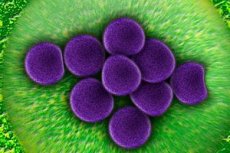New publications
Complications of microbial contamination can be saved from known medications
Last reviewed: 02.07.2025

All iLive content is medically reviewed or fact checked to ensure as much factual accuracy as possible.
We have strict sourcing guidelines and only link to reputable media sites, academic research institutions and, whenever possible, medically peer reviewed studies. Note that the numbers in parentheses ([1], [2], etc.) are clickable links to these studies.
If you feel that any of our content is inaccurate, out-of-date, or otherwise questionable, please select it and press Ctrl + Enter.

The antithrombotic drug Brilinta (Ticagrelor) and the anti-flu drug Oseltamivir ensure normal platelet aggregation during microbial blood poisoning. This helps prevent complications and speed up recovery.
Sepsis is a severe adverse reaction following a microbial infection. The condition can be complicated by the loss of functionality of several organs at once, which leads to death. The mortality rate for sepsis is about 25%. The most common causative agent of a septic reaction is Staphylococcus aureus.
Antibiotic therapy is usually prescribed for sepsis, but it is not always effective. Researchers at the University of California, San Diego, have suggested supplementing the therapy with other drugs. They reported this on the pages of Science Translational Medicine.
Scientists studied medical records of about fifty patients with septic staphylococcal conditions. They noted that positive outcomes of the disease were largely associated with the level of platelets. At a low level (less than 100 thousand per 1 mm³ of blood), increased mortality was observed (about 30%), while in patients with an indicator of more than 100 thousand per 1 mm³ of blood, mortality was only 6%.
Platelets play a role not only in blood clotting processes. They secrete antibacterial peptides that activate the immune defense to destroy microbes. At the same time, staphylococcus secretes a protein substance, α-toxin, which damages cell membranes and activates an enzyme that removes sialic acid from the platelet surface. This process leads to platelets being actively removed from the circulatory system as defective. As a result, the immune system is not stimulated, sepsis increases, and the patient's condition worsens.
The scientists' task was to find drugs that could counteract the adverse effects of α-toxin. These drugs turned out to be Ticagrelor and Oseltamivir (Tamiflu, Flucap). Ticagrelor inhibits platelet adhesion and thrombus formation, and inactivates α-toxin, preventing it from removing sialic acid from platelets. Oseltamivir blocks the enzyme, which allows platelets to remain in the bloodstream even with high levels of α-toxin.
Both drugs, in addition to clinical effectiveness, also have some side effects. Therefore, specialists have yet to find out the optimal dosage of these drugs to combat the development of a septic condition without serious side effects. In addition, scientists need to determine how successful the use of Ticagrelor and Oseltamivir will be in sepsis caused by other bacterial pathogens, and not just Staphylococcus aureus. Therefore, further research is still ongoing. It is quite possible that long-known drugs will soon be repurposed.
Original source of information: Science Translational Medicine.
